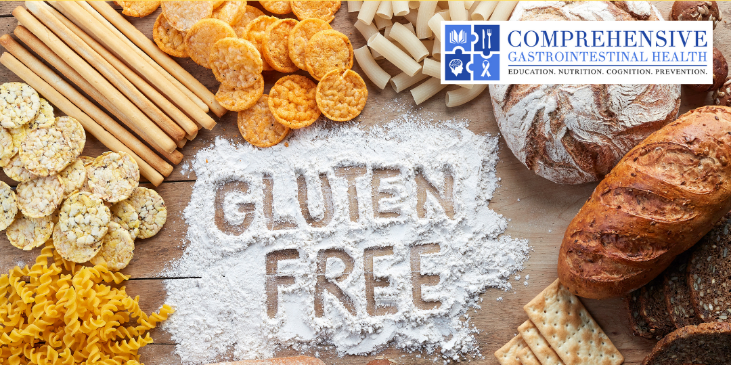Going gluten-free? When the popular diet trend does (and doesn’t) make nutritional sense
Going gluten-free? When the popular diet trend does (and doesn’t) make nutritional sense
by Julie Adams, RD
If you’re confused about gluten, you are not alone. The gluten-free diet trend is poised for continued growth through 2024, with a projected global market increase of 3.19 billion dollars, according to Technavio’s market research. It seems the widely held belief that gluten-free living confers a health advantage on the general population shows no sign of subsiding.
Gluten-free living is a necessity for those diagnosed with celiac disease, prevalent among 1.4% of the global population. The best version of the diet limits refined starch and sugar while maximizing fruits, vegetables, nuts, beans, and gluten-free grains like pure oats and buckwheat. Inferior versions rely too heavily on refined rice, corn and other processed starches.
Without evidence of celiac disease or other gluten intolerances described below, avoiding gluten can potentially interfere with the attainment of a nutrient-rich, balanced diet. A 2018 Tufts University study featured in the journal Nutrients found that gluten-containing diets tend to deliver more fiber, folate, vitamin E, magnesium, potassium and total protein than gluten-free diets.
What is gluten?
Gluten is a type of protein found in wheat, barley, rye and some oats. When two smaller proteins called gliadins and glutenins are exposed to water, they bind together to form gluten. Gluten’s elasticity gives bread and other baked goods the moist, spongy mouthfeel we enjoy.
Eating gluten-free requires avoidance of wheat, barley and rye in whole and processed foods, supplements, medications, and even lip balms. Special attention must be placed on eating a variety of fruits, vegetables, legumes, nuts, seeds, unprocessed meats, fish, eggs and dairy. Grains such as brown rice, buckwheat, millet, amaranth, and gluten-free oats are healthful swaps when following a gluten-free diet.
When “gluten-free” is the right decision:
Celiac disease – People diagnosed with celiac disease have an autoimmune reaction to gluten that damages the lining of the small intestine and impairs nutrient absorption. Ingesting gluten can lead to varying degrees of abdominal pain, diarrhea, constipation, vomiting, weight loss and/or fatigue. Diagnosing celiac disease requires a blood test for gluten antibodies and is confirmed with an intestinal biopsy that looks for intestinal wall damage. The only available treatment is lifelong avoidance of gluten.
Wheat allergy – An overreactive immune response to a wheat protein necessitates avoiding wheat-containing gluten. Some people who are allergic to wheat may also react to the other gluten-containing grains, barley and rye. As one of the 8 most common food allergens, wheat ingestion can abruptly trigger gastrointestinal, respiratory and/or skin symptoms. Diagnosis is made with blood or skin prick tests. Those who test positive will follow a wheat-free diet and may also layer antihistamines and/or epinephrine.
Non-celiac gluten sensitivity – In the absence of celiac disease or a wheat allergy diagnosis, non-celiac gluten sensitivity may be at fault. Researchers have yet to provide clear evidence of why this happens, or tests to confirm its existence. Sometimes, simply limiting gluten intake provides relief. NCGS is not known to cause intestinal inflammation or damage. It also won’t trigger the production of antibodies. If symptoms improve on a gluten-free diet, but return after gluten is reintroduced, non-celiac gluten sensitivity may be responsible.
FODMAP or gluten sensitivity?
In some instances, the gluten protein is “blamed” for symptoms triggered by poorly absorbed fructan carbohydrates also found in wheat, barley and rye. This short-chain carbohydrate ferments in the colon, causing symptoms of abdominal pain, bloating, constipation and/or diarrhea in some people. Since wheat, barley and rye contain both gluten and fructans, figuring out the culprit can be challenging. Sometimes it’s both of them! A trial of the low FODMAP elimination diet, followed by isolated reintroductions, helps those with irritable bowel symptoms determine whether the cause is gluten, fructans, or both. As with NCGS, limiting the portion of gluten may be enough to provide relief.
If you think your symptoms are related to gluten, schedule an appointment with Comprehensive Gastrointestinal Health’s doctors, nurse practitioner and dietitians. Our team will help lead you on your path to recovery. Call today at 224-407-4400 or visit our website at www.compgihealth.com.

